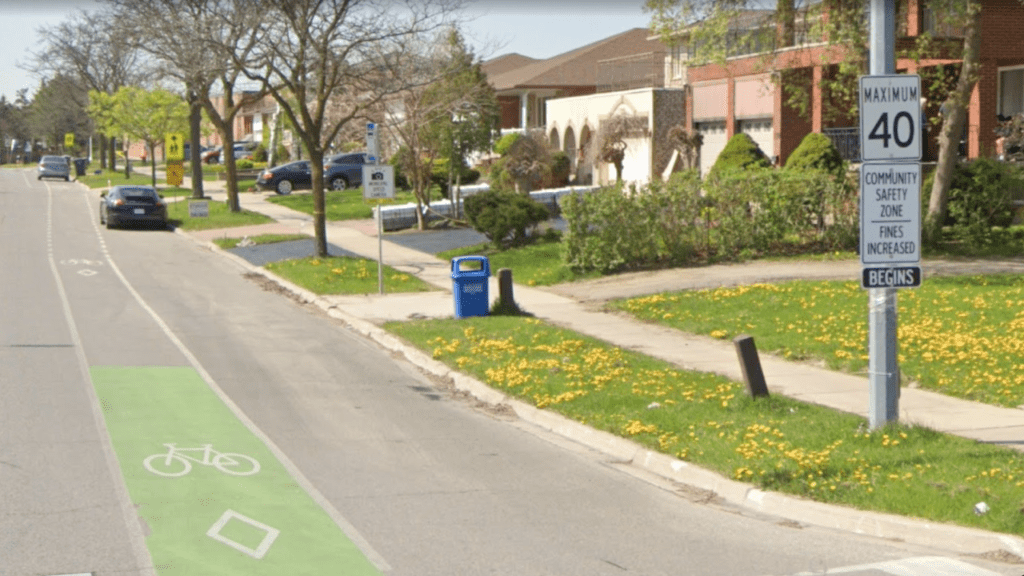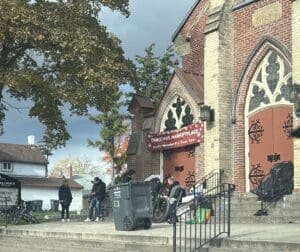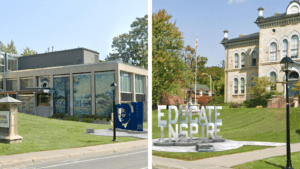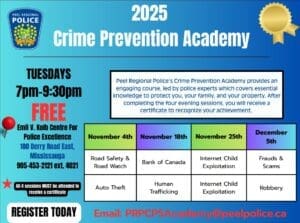Brampton is taking a comprehensive approach to traffic calming to address speeding and unsafe driving in local neighbourhoods. City Council recently increased the budget for traffic calming with a focus to implement a combination of tools including traffic cameras, road diets, speed bumps, flexi-signs, and speed reductions.
Regional Councillor Rowena Santos (Wards 1 & 5) strongly believes that implementing a combination of traffic calming measures will have a tangible impact. She says that “we need a multi-faceted approach to road safety and have seen significant speed reductions on Vodden Street West and Centre Street North, where a combination of traffic calming measures have been implemented.”
She added that “while we have reduced speeds effectively in piloted neighbourhoods, we continue to experience an increasing number of concerns related to speeding in other areas across the entire city.” Councillor Dennis Keenan (Wards 3 & 4) said that “we need to make sure roads are getting the appropriate speed calming measures.”
The city has been testing and implementing a number of measures to make our roads safer, including:
Speed Cameras
ASE (Automated Speed Enforcement) traffic cameras have been installed in strategic locations on a rotation across the city, including Wards 1 & 5, to monitor traffic flow and detect speeding violations. These cameras serve as a deterrent to speeding and help enforce traffic laws, making the streets safer for all road users.
Speed Cushions
Speed cushions are raised areas on the road that don’t cover the entire width. They are designed to allow wider emergency vehicles and buses to pass unaffected while causing smaller vehicles to slow down. In the case of Vodden Street West, Royal Orchard Drive, and Centre Street North, these traffic calming measures have been implemented along with pavement markings.
Road Diets
Brampton has implemented road diets in certain areas by reallocating space on the road to create narrower lanes, wider sidewalks, painted shoulders, and dedicated cycling lanes. A narrower space for cars helps calm traffic and create a safer environment for pedestrians and cyclists.
Flexi-Signs
Many roadways in Wards 1 & 5 received these speed signs over the course of 2022. These signs are designed to withstand impacts from vehicles and collapse and rebound to avoid damage. They are installed in the center of the road between opposing traffic lanes. The signs proved to be effective in reducing sporadic speeding by drivers intentionally traveling at higher rates of speed.
Vision Zero
The city is prioritizing Vision Zero, a global road safety initiative that aims to eliminate traffic fatalities and severe injuries. This approach focuses on improving road design, traffic enforcement, and public education to create a safe and sustainable transportation system for all users. City Council approved an innovative neighbourhood pilot program that aims to reduce speed limits in selected areas from 50 km/h to 40 km/h. The pilot program will initially focus on the Royal West Drive and Elbern Markell Drive neighbourhoods in Ward 5, with the goal of studying its effect on driver behavior and improving road safety.
Budget Increase
Council increased the budget for traffic calming measures, recognizing the importance of investing in road safety. This additional funding allows for the implementation of a range of traffic calming measures, providing a comprehensive approach to improving road safety in the city.
Culture Shift
City Council is creating a culture shift to maintain legal traffic speeds and promote safer driving habits. This includes public awareness campaigns, educational programs, and community engagement initiatives to encourage responsible driving behavior and foster a culture of road safety.
Councillor Santos says that “we are implementing traffic calming measures while creating more options for people to get around without a car.” Santos adds that “ there is a shift in how people are choosing to get around and we must create safer streets and neighbourhoods that are conducive to walking, cycling, and using public transportation.”
-30-
MEDIA CONTACT:
Anitpal (Nitu) Grewal – C: (437) 331-4555, Email: Anitpal.Grewal@Brampton.ca
ADDITIONAL RESOURCES:
1. Traffic Calming projects in Brampton
2. Committe of Council, April 26, 2023- popup10.3.1 Discussion Item at the request of Regional Councillor Santos and Regional Councillor Keenan, re: Update on Traffic Calming Measures, timestamp 01:19:30
3. Traffic Calming Plan for Wards 1 & 5, Report from March 2021








